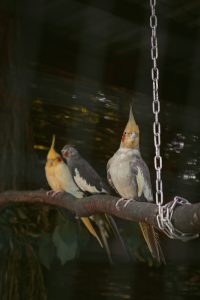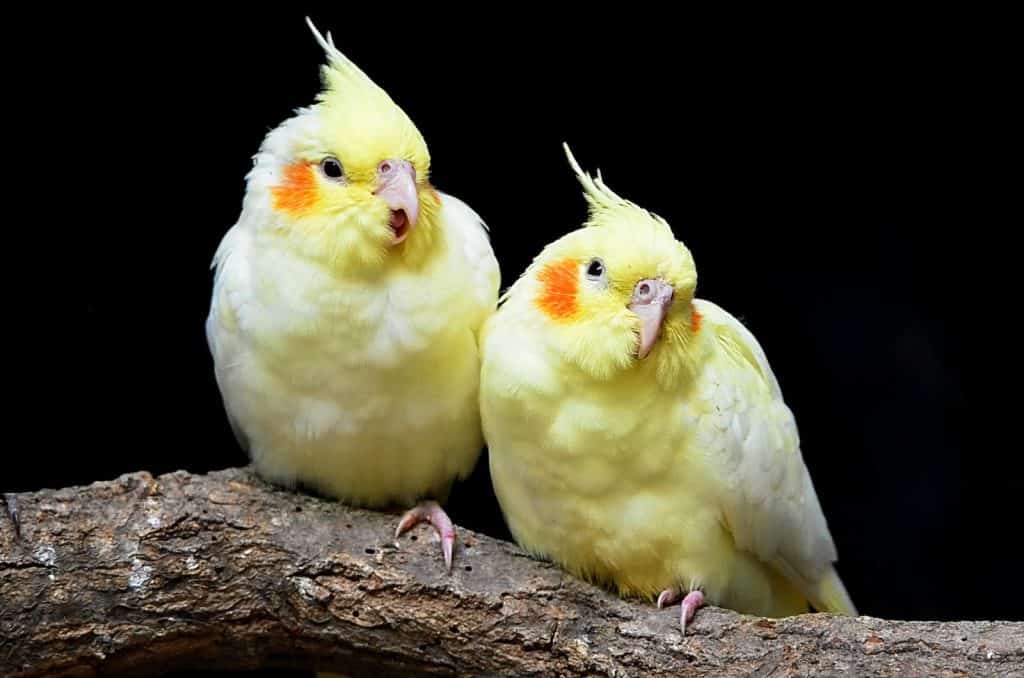In this article, we will explore the reasons behind cockatiels fighting and provide helpful tips on how to prevent and manage aggressive behavior in your birds.
Cockatiels are beloved pets for many people around the world due to their charming personalities and friendly nature. However, like any animal, cockatiels can become aggressive and territorial, leading to fighting between birds. There are several reasons why your cockatiels may be fighting, such as hormonal changes, a lack of space or resources, or socialization issues. It is essential to understand the underlying causes of cockatiel aggression to prevent injuries and ensure the well-being of your pets.
Why Are My Cockatiels Fighting?
It’s not unusual for two cockatiels or multiple cockatiels in the same location to quarrel; it’s just that sometimes things get out of hand when one of the cockatiels demonstrates much more violent behavior than usual, such as a continual assault by a male cockatiel on a female bird.
Cockatiels can regulate their coexistence by regulating dominance and various gestures that establish hierarchy in a flock. It’s conceivable that the other bird is wounded or cockatiels kill to demonstrate who is the superior and in command of the group.
This is seen in both dog and cat breeding, and it should be regarded as completely natural.
When dominance behavior rises to the point that your new bird or feathered friend becomes excessively aggressive toward another lesser bird and harasses it, this can quickly result in agitation and discomfort.

Why Is My Cockatiel Suddenly Aggressive?
There could be several reasons why your cockatiel is suddenly showing aggressive behavior. Here are a few possibilities:
- Illness or injury: Cockatiels may become aggressive if they are in pain or uncomfortable due to an underlying illness or injury. If you notice any other unusual symptoms or behaviors in your bird, it’s best to consult with an avian veterinarian.
- Hormonal changes: Cockatiels can become more aggressive during breeding season or when they are experiencing hormonal changes. This may manifest as territorial behavior, biting, or vocalization.
- Lack of socialization or training: Cockatiels that are not well-socialized or trained may display aggressive behavior. If your bird hasn’t been properly socialized, it may not be used to human interaction and may see you as a threat.
- Environmental factors: Changes in the environment or routine can cause stress in birds, which may lead to aggressive behavior. This could include changes in cage placement, new pets or people in the household, or changes in daily routines.
It’s important to observe your cockatiel’s behavior and try to identify any potential triggers for their aggression. Consult with an avian veterinarian or a qualified bird behaviorist for guidance on how to address the behavior and create a safe and comfortable environment for your bird.
Why Do Cockatiels Continue Attack Each Other?
We’ve all had our time when we lost our temper for no good reason, which at the time appeared vital to us and not because we thought of ourselves as aggressive.
It’s also true that the person and the many situations we can find ourselves in can alter our reactions considerably.
In the animal kingdom, something similar to what happens to us “humans” occurs: a character with various variables, who acts in one manner or another depending on the situation.
In this sense, the environmental factors are crucial in determining a cockatiel’s “mood,” not its character. Although this was one way or another, overcrowding, lack of water and food, and limited space were all important considerations in determining a cockatiel’s mood rather than its disposition.
Many of the issues and conflicts that occur in cockatiels who live together or in a group are caused by their treatment.
- Cockatiels can fight for a variety of reasons, but one of the most common is due to an accidental altercation with another individual. This sort of battle is usually brief and typical among cockatiels.
- In a cage with many animals, aggressiveness can result from overcrowding, which promotes increased interactions among the different creatures living in it and the formation of a hierarchy.
- When there are several cockatiels and a single feeder, competition for food occurs.
- There’s no room for two birds who want to play together in the one cage. You can’t have a happy cockatiel or pair of cockatiels when there isn’t enough space for them to fly around and explore. The problem is that many people, particularly beginners, don’t know how much cage space their cockatiels require.
- In spite of their high sociability, Cockatiels are fiercely territorial birds that aggressively defend their territory. This aggressive behavior, however, is usually limited to specific periods of the year.
Other individuals and species, however, are not acceptable to the majority of Cockatiels.
Cockatiels, as territorial birds, use a variety of methods to demonstrate their claim of territory and defend themselves from others or new cockatiel.
In exceptional circumstances, this only resorts to force. Visual displays (bright colors), auditory (calls, tweets) and olfactory (urine, feces and other secretions of odorous glands) are the most popular methods of expressing one’s territory.
6.Hand-raised cockatiels are often aggressive for a variety of reasons, the first and most frequent being that they are protecting their territory.
- Perfect intelligence design toys for your bird thinking development.
- By observing your parrot you will quickly see that birds really prefer "working" to obtain their food.
- Place the bird in a cage favorite food or toy blocks, allow the birds to eat or take out their own brains how to play.
- The toy provides a Challenging&Fun Way for birds to acquire nuts,fruit or other bigger treats from holes in different shape,Which keeps your bird busy with fun for hours.
- This is intelligence improvement chewing toy. It need some thinking when the bird take out the food from the grid which is not in shape,and keep your parrot busy and fun for hours.
What Should I Do for My Cockatiels?
I believe it’s time to put your cockatiels to separate cages for the sake of their protection. You have a number of alternatives. One option is to bring in one cockatiel as a pet cockatiel and then reunite the males back together without the influence of a love interest that has broken up their relationship.
You can also mix the same-sex cockatiels, but for safety reasons, separate them into two cages. Alternatively, you may separate two male cockatiels into one cage and give them a chance to strengthen their bond. If the cockatiels continue to fight, they may be housed in three different bird cages.
You can reunite aggressive pet birds at any time of year if you separate them now. It’s natural for wild birds to congregate in flocks and form families at other times.
A male cockatiel’s natural instinct is to attack its partner when there is a danger of being harmed. Your other Cockatiel might feel protective towards female cockatiel, so he violently drives her away from other birds and people. It’s possible that your bird is irritated by the fact that his cockatiel has suddenly shifted his attention to another bird.
My cockatiel, got its intended mate hurt when it was unable to reach the object of his affection because he had a lovelorn disposition. Even though cockatiels are typically docile birds, displaced hostility and aggravation can result in harm.
That is why, if your two pet birds can cohabit comfortably without the influence of other birds outside, I suggest you separate them or create a separate cage for your trio. Male and female cockatiels may live together in a trio if all individuals agree, but only if they are separated from each other. They may also be raising a brood of chicks together with the “aunt” or “uncle,” assisting to hatch eggs and feeding the young.




